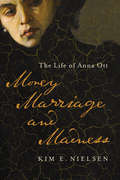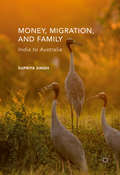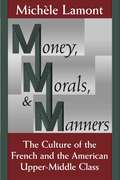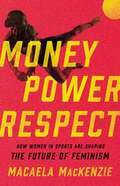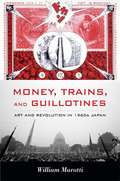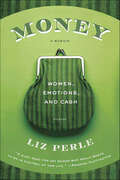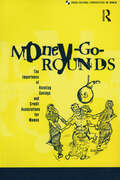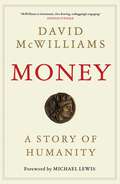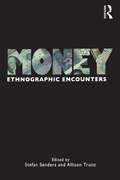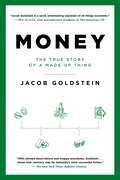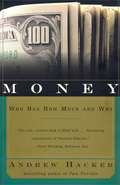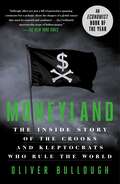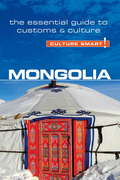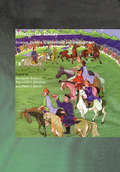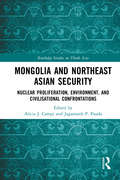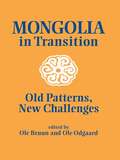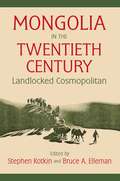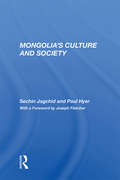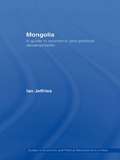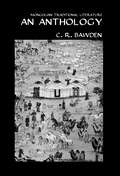- Table View
- List View
Money, Marriage, and Madness: The Life of Anna Ott (Disability Histories)
by Kim E. NielsenAnna Ott died in the Wisconsin State Hospital for the Insane in 1893. She had enjoyed status and financial success first as a physician's wife and then as the only female doctor in Madison. Throughout her first marriage, attempts to divorce her abusive second husband, and twenty years of institutionalization, Ott determinedly shaped her own life. Kim E. Nielsen explores a life at once irregular and unexceptional. Historical and institutional structures, like her whiteness and laws that liberalized divorce and women's ability to control their property, opened up uncommon possibilities for Ott. Other structures, from domestic violence in the home to rampant sexism and ableism outside of it, remained a part of even affluent women's lives. Money, Marriage, and Madness tells a forgotten story of how the legal and medical cultures of the time shaped one woman—and what her life tells us about power and society in nineteenth century America.
Money, Migration, and Family: India to Australia
by Supriya SinghThis book tells the story of nearly five decades of Indian migration to Australia from the late 1960s to 2015, through the eyes of migrants and their families. Firstly, there is the marked increase of Indian migrants, shifting from the earlier professionals to a dominance of student-migrants. The India-born in Australia are the fourth largest overseas born group. Secondly, remittances flow two ways in families between Australia and India. Thirdly, family communication across borders has become instantaneous and frequent, changing the experience of migration, family and money. Fourthly, mobility replaces the earlier assumption of settlement. Recent migrants hope to settle, but the large group who have come to study face a long period of precarious mobility. Lastly, recent migrants re-imagine the joint family in Australia, buying homes to accommodate siblings and parents. This is changing the contours of some major cities in Australia.
Money, Morals, & Manners: The Culture of the French and the American Upper-Middle Class (Morality And Society Ser.)
by Michèle LamontDrawing on remarkably frank, in-depth interviews with 160 successful men in the United States and France, Michèle Lamont provides a rare and revealing collective portrait of the upper-middle class—the managers, professionals, entrepreneurs, and experts at the center of power in society. Her book is a subtle, textured description of how these men define the values and attitudes they consider essential in separating themselves—and their class—from everyone else.Money, Morals, and Manners is an ambitious and sophisticated attempt to illuminate the nature of social class in modern society. For all those who downplay the importance of unequal social groups, it will be a revelation. "A powerful, cogent study that will provide an elevated basis for debates in the sociology of culture for years to come."—David Gartman, American Journal of Sociology "A major accomplishment! Combining cultural analysis and comparative approach with a splendid literary style, this book significantly broadens the understanding of stratification and inequality. . . . This book will provoke debate, inspire research, and serve as a model for many years to come."—R. Granfield, Choice "This is an exceptionally fine piece of work, a splendid example of the sociologist's craft."—Lewis Coser, Boston College
Money, Morals, and Manners
by Michèle LamontDrawing on remarkably frank, in-depth interviews with 160 successful men in the United States and France, Michèle Lamont provides a rare and revealing collective portrait of the upper-middle class—the managers, professionals, entrepreneurs, and experts at the center of power in society. Her book is a subtle, textured description of how these men define the values and attitudes they consider essential in separating themselves—and their class—from everyone else. Money, Morals, and Manners is an ambitious and sophisticated attempt to illuminate the nature of social class in modern society. For all those who downplay the importance of unequal social groups, it will be a revelation. "A powerful, cogent study that will provide an elevated basis for debates in the sociology of culture for years to come. "—David Gartman, American Journal of Sociology "A major accomplishment! Combining cultural analysis and comparative approach with a splendid literary style, this book significantly broadens the understanding of stratification and inequality. . . . This book will provoke debate, inspire research, and serve as a model for many years to come. "—R. Granfield, Choice "This is an exceptionally fine piece of work, a splendid example of the sociologist's craft. "—Lewis Coser, Boston College
Money, Murder, and Dominick Dunne: A Life in Several Acts
by Robert HoflerDominick Dunne seemed to live his entire adult life in the public eye, but in this biography Robert Hofler reveals a conflicted, enigmatic man who reinvented himself again and again. As a television and film producer in the 1950s–1970s, hobnobbing with Humphrey Bogart and Natalie Wood, he found success and crushing failure in a pitiless Hollywood. As a Vanity Fair journalist covering the lives of the rich and powerful, he mesmerized readers with his detailed coverage of spectacular murder cases—O.J. Simpson, the Menendez brothers, Michael Skakel, Phil Spector, and Claus von Bülow. He had his own television show, Dominick Dunne's Power, Privilege, and Justic. His five best-selling novels, including The Two Mrs. Grenvilles, People Like Us, and An Inconvenient Woman, were inspired by real lives and scandals. The brother of John Gregory Dunne and brother-in-law of Joan Didion, he was a friend and confidante of many literary luminaries. Dunne also had the ear of some of the world's most famous women, among them Princess Diana, Nancy Reagan, Liz Smith, Barbara Walters, and Elizabeth Taylor. Dunne admitted to inventing himself, and it was that public persona he wrote about in his own memoir, The Way We Lived Then. Left out of that account, but brought to light here, were his intense rivalry with his brother John Gregory, the gay affairs and relationships he had throughout his marriage and beyond, and his fights with editors at Vanity Fair. Robert Hofler also reveals the painful rift in the family after the murder of Dominick's daughter, Dominique—compounded by his coverage of her killer's trial, which launched his career as a reporter.
Money, Power, Respect: How Women in Sports Are Shaping the Future of Feminism
by Macaela MacKenzieAn inside look at how women athletes are leading the fight for equality—on and off the field Women&’s sports receive a fraction of the airtime allotted for men&’s sports, as well as a fraction of the marketing dollars, media coverage, and training resources. For every dollar that the NBA&’s highest-paid player brings home, the WNBA&’s highest-paid player earns just half a cent. But while misogyny in sports is particularly visible, it&’s not unique. Women athletes face the same sexist barriers found in all career fields: the motherhood penalty, transphobia and misogynoir, underpromotion, and more. But women in sports are fighting back, debunking myths that women aren&’t as skilled, competitive, or capable of generating revenue as men. Drawing on exclusive interviews with prominent athletes—including Allyson Felix, Megan Rapinoe, and Billie Jean King—journalist Macaela Mackenzie shows how women are using sports as a platform for change. As women athletes push for the same things all women want in their careers—money, power, and respect—their wins are showing the rest of us what&’s possible in the fight for equality.
Money, Trains, and Guillotines: Art and Revolution in 1960s Japan
by William MarottiDuring the 1960s a group of young artists in Japan challenged official forms of politics and daily life through interventionist art practices. William Marotti situates this phenomenon in the historical and political contexts of Japan after the Second World War and the international activism of the 1960s. The Japanese government renewed its Cold War partnership with the United States in 1960, defeating protests against a new security treaty through parliamentary action and the use of riot police. Afterward, the government promoted a depoliticized everyday world of high growth and consumption, creating a sanitized national image to present in the Tokyo Olympics of 1964. Artists were first to challenge this new political mythology. Marotti examines their political art, and the state's aggressive response to it. He reveals the challenge mounted in projects such as Akasegawa Genpei's 1,000-yen prints, a group performance on the busy Yamanote train line, and a plan for a giant guillotine in the Imperial Plaza. Focusing on the annual Yomiuri Indépendant exhibition, he demonstrates how artists came together in a playful but powerful critical art, triggering judicial and police response. Money, Trains, and Guillotines expands our understanding of the role of art in the international 1960s, and of the dynamics of art and policing in Japan.
Money, a Memoir: Women, Emotions, and Cash
by Liz PerleA “remarkable” and revealing account of one woman’s finances—and how women’s thoughts and feelings about money can wreak havoc on their lives (Publishers Weekly, starred review).Long ago, and not entirely consciously, Liz Perle made a quiet contract with cash: she would do what it took to get it—work hard, marry right—but she didn’t want to have to think about it too much. The subject of money had, since childhood, been quietly sidestepped, a shadowy factor whose private influence was impolite to discuss. This denial eventually exacted its price, however, when a divorce left Perle with no home, no job, and a four-year-old with a box of toys. She realized she could no longer afford to leave her murky and fraught relationship with money unexamined.What Perle discovered as she reassembled her life was that almost every woman she knew also subscribed to this strange code of discretion—even though it laced through their relationships with their parents, lovers, husbands, children, friends, coworkers, and communities. Women who were all too willing to tell each other about their deepest secrets or sexual assets still kept mum when it came to their financial ones.In Money, A Memoir, Perle attempts to break this silence, adding her own story to the anecdotes and insights of psychologists, researchers, and more than 200 “ordinary” women. It turned out that when money was the topic, most women needed permission to talk. The result is an insightful, unflinching look at the subtle yet commanding influence of money on our every relationship.“Profiles dozens of everyday women, spotlighting the anxiety, embarrassment and guilt money causes them. Commentary from financial experts, sociologists and others helps demonstrate Perle’s thesis: women cannot afford to be ambivalent about money and must learn to separate feelings from finance.” —Publishers Weekly (starred review)
Money-Go-Rounds: The Importance of ROSCAs for Women (Cross-Cultural Perspectives on Women)
by Shirley Ardener Sandra BurmanOn most continents - from the USA to Africa and Asia - various forms of rotating savings and credit associations (ROSCAs) serve men and women of the community, often as their major -- and sometimes their only -- savings institution. ROSCAs are self-help money-pooling associations with participants who agree to make regular contributions to a fund which is given, in whole or in part, to each contributor in rotation. Many ROSCAs have elaborate systems to cope with inflation, default and the distribution of benefits. In providing important social and welfare resources they constitute valuable social capital.This unique volume of case studies by an international group of experts, which examines ROSCAs on a worldwide basis, will be of interest to anyone studying or concerned with anthropology, economics, women's issues, and especially the welfare of the less developed countries and immigrant communities in 'the West'.
Money: 5,000 Years of Debt and Power
by David Broder Michel Aglietta Pepita Ould Ahmed Jean-François PonsotThe major French economist offers a new theory of moneyAs the financial crisis reached its climax in September 2008, the most important figure on the planet was Federal Reserve chairman Ben Bernanke. The whole financial system was collapsing, with little to stop it. When a senator asked Bernanke what would happen if the central bank did not carry out its rescue package, he replied, “If we don’t do this, we may not have an economy on Monday.”What saved finance, and the Western economy, was fiscal and monetary stimulus – an influx of money, created ad hoc. It was a strategy that raised questions about the unexamined nature of money itself, an object suddenly revealed as something other than a neutral signifier of value. Through its grip on finance and the debt system, money confers sovereign power on the economy. If confidence in money is not maintained, crises follow. Looking over the last 5,000 years, Michel Aglietta explores the development of money and its close connection to sovereign power. This book employs the tools of anthropology, history and political economy in order to analyse how political structures and monetary systems have transformed one another. We can thus grasp the different eras of monetary regulation and the crises capitalism has endured throughout its history.
Money: A Story of Humanity
by David McWilliamsIn this groundbreaking book, renowned global economist David McWilliams unlocks the mysteries and the awesome power of money: what it is, how it works, and why it matters.The story of money is the story of our desires, our genius, and our downfalls. Money is power—and power beguiles. Nothing we&’ve invented as a species has defined our own evolution so thoroughly and changed the direction of our planet&’s history so dramatically. Money has shaped the very essence of what it means to be human. We can&’t hope to understand ourselves without it. And yet despite money&’s primacy, most of us don&’t truly understand it. As economist David McWilliams states, money is everything. &“Money defines the relationship between worker and employer, buyer and seller, merchant and producer. But not only that: it also defines the bond between the governed and the governor, the state and the citizen. Money unlocks pleasure, puts a price on desire, art and creativity. It motivates us to strive, achieve, invent and take risks. Money also brings out humanity&’s darker side, invoking greed, envy, hatred, violence and, of course, colonialism.&” Money isn&’t just paper or coins or virtual currency. Money is humanity. Leading economics expert, David McWilliams answers these questions and more in Money, an epic, breathlessly entertaining journey across the world through the present and the past, from the birthplace of money in ancient Babylon to the beginning of trade along the silk road to China, from Marrakech markets to Wall Street and the dawn of cryptocurrency. By tracking its history, McWilliams uncovers our relationship with money, transforming our perspective on its impact on the world right now. McWilliams is no dusty economist; he is a communicator at the highest level, a highly telegenic and marketable expert who is as comfortable in front of a large audience talking about his favourite subject as he is appearing on podcasts, social media, and even in stand-up comedy. He&’s been called Ireland&’s most important economist and is ranked among the leading economists working today. The story of money is the story of earth&’s most inventive, destructive, and dangerous animal: Homo sapiens. It is our story.
Money: Ethnographic Encounters (Encounters: Experience and Anthropological Knowledge #2)
by Stefan SendersIn Money: Ethnographic Encounters, anthropologists tell stories of their experiences with money in the field. Through vivid fieldwork accounts, they explore the ways money has influenced their perceptions and understandings of culture. These accounts raise critical questions. How do anthropologists come to know another culture through ordinary yet unexpected experiences with money? How is anthropological knowledge produced through these interactions? Money: Ethnographic Encounters offers students, teachers and researchers the opportunity to consider the work of anthropology through vigorous narrative. It also includes a Guide to Further Reading for students. With stories of fieldwork in such varied sites as Vietnam, Ghana, China, and Malawi, Money: Ethnographic Encounters is ideal for all students of anthropology.
Money: The True Story of a Made-Up Thing
by Jacob GoldsteinThe co-host of the popular NPR podcast Planet Money provides a well-researched, entertaining, somewhat irreverent look at how money is a made-up thing that has evolved over time to suit humanity's changing needs.Money only works because we all agree to believe in it. In Money, Jacob Goldstein shows how money is a useful fiction that has shaped societies for thousands of years, from the rise of coins in ancient Greece to the first stock market in Amsterdam to the emergence of shadow banking in the 21st century.At the heart of the story are the fringe thinkers and world leaders who reimagined money. Kublai Khan, the Mongol emperor, created paper money backed by nothing, centuries before it appeared in the west. John Law, a professional gambler and convicted murderer, brought modern money to France (and destroyed the country's economy). The cypherpunks, a group of radical libertarian computer programmers, paved the way for bitcoin.One thing they all realized: what counts as money (and what doesn't) is the result of choices we make, and those choices have a profound effect on who gets more stuff and who gets less, who gets to take risks when times are good, and who gets screwed when things go bad.Lively, accessible, and full of interesting details (like the 43-pound copper coins that 17th-century Swedes carried strapped to their backs), Money is the story of the choices that gave us money as we know it today.
Money: Who Has How Much and Why
by Andrew HackerThe purpose of "Money" is to provide objective information on how much money Americans make and what they are actually worth. In doing so, it examines their sources of income, and how individuals and groups compare with one another. Its second aim is to explain why income, earnings and wealth end up as apportioned as they do. Combining keen insight with a flair for bringing a human dimension to facts and figures, bestselling author Andrew Hacker shows how the changing economy affects our lives. Here, Hacker's clear-eyed analysis illuminates the real results of women's fight for salary parity, the impact of affirmative action on the income of minorities; the effect immigration has on the job market, and much more.
Moneyland: The Inside Story of the Crooks and Kleptocrats Who Rule the World
by Oliver BulloughInc.com 5 Business Thrillers to Read on the Beach This Summer * Amazon Best Book of the Month - Nonfiction * An Economist Book of the Year * The Sunday Times Business Book of the Year"If you want to know why international crooks and their eminently respectable financial advisors walk tall and only the little people pay taxes, this is the ideal book for you. Every politician and moneyman on the planet should read it, but they won't because it's actually about them." —John le Carré, author of A Legacy of Spies An investigative journalist's deep dive into the corrupt workings of the world's kleptocrats.From ruined towns on the edge of Siberia, to Bond-villain lairs in London and Manhattan, something has gone wrong. Kleptocracies, governments run by corrupt leaders that prosper at the expense of their people, are on the rise. Once upon a time, if an official stole money, there wasn't much he could do with it. He could buy himself a new car or build himself a nice house or give it to his friends and family, but that was about it. If he kept stealing, the money would just pile up in his house until he had no rooms left to put it in, or it was eaten by mice. And then some bankers had a bright idea. Join the investigative journalist Oliver Bullough on a journey into Moneyland—the secret country of the lawless, stateless superrich. Learn how the institutions of Europe and the United States have become money-laundering operations, attacking the foundations of many of the world's most stable countries. Meet the kleptocrats. Meet their awful children. And find out how heroic activists around the world are fighting back. This is the story of wealth and power in the 21st century. It isn't too late to change it.
Mongolia - Culture Smart!
by Alan SandersMongolia is landlocked between its neighbors China and Russia in the heart of Asia. For centuries after the disintegration of Genghis Khan's empire it was ruled by one or the other, but in 1990 the Mongols embraced democracy. Now, after two centuries of Manchu stagnation and seventy years of Soviet communism, they are rebuilding their national heritage. Rarely in the news but making progress toward a market economy, this resource-rich but infrastructure-poor country is a land of pioneers, and its greatest asset is the Mongol people, who are friendly, cooperative, ambitious, and well educated. English is now the first foreign language and the country's leaders are forging new partnerships with international investors. Travelers from across the world are drawn to the "land of blue sky" by its picturesque mountains and lakes, flower-carpeted steppes and stony deserts, home to the snow leopard, the wild horse and camel, and the Gobi bear. The broad pasturelands, with herds of grazing livestock, and the traditional lifestyle of the nomads contrast with the busy streets of the capital Ulan Bator, a bustling metropolis of over one million people, modern hotels, apartments, and shops, interspersed with Buddhist monasteries and temples, surrounded by crowded suburbs of traditional felt tents. Mongolia's many attractions range from dinosaur skeletons and the remains of ancient civilizations to relics and reenactments of the Genghis Khan era, and the traditional sports of wrestling, archery, and horse-racing. Culture Smart! Mongolia provides rare insights into contemporary Mongolian society, and offers practical tips on what to expect and how to conduct yourself in order to get the most out of your visit. Despite the undeniable challenges posed by modernity, these warm, tough, adaptable, and hospitable people welcome visitors and are open to the world.
Mongolia Today: Science, Culture, Environment and Development (Central Asian Studies)
by Peter J. Balint Raymond A. Zilinskas Dendeviin BadarchThis is a wide-ranging collection of essays written by experts in the field. The variety of topics provide an interdisciplinary approach to the study of contemporary Mongolia. Topics include the impact of industrialization in Mongolia, environmental policies of the nation, the status of modern biotechnology in Mongolia, Mongolian dairy products, traditional husbandry techniques practised by nomadic people, a description of medicinal plants and their uses in Mongolian traditional medicine, descriptions of unique Mongolian birds, fishes and microbiota, discussion of the fascinating flora and fauna of the Gobi region, and a conservation case-study of the endangered Gobi bear.
Mongolia and Northeast Asian Security: Nuclear Proliferation, Environment, and Civilisational Confrontations (Routledge Studies on Think Asia)
by Alicia J. CampiThis book assesses Mongolia’s position in the security calculus of Northeast Asia and presents the policy outlooks of major powers vis-a-vis the region, including the United States, Japan, China, Russia, and India. Ground-breaking and modernistic in its approach, the book treats the often marginalised and landlocked small power state of Mongolia as a critical regional actor, particularly with regards to managing ties with encircling major powers Russia and China and assist in engaging the nuclear state of North Korea through dialogue mechanisms. This compilation of chapters by distinguished scholars explores Mongolia in the Northeast Asian geographical space within the context of three major themes: nuclear proliferation, environmental security, and socio-economic and civilisational conflicts. The book provides a multidisciplinary and multinational approach to Mongolia’s role in the region's strategic landscape. It moves the regional security discussion beyond major power politics, North Korea's denuclearisation, and the impasse on the Korean Peninsula to discuss and analyse other underappreciated challenges facing the region. Considering Mongolia’s role in achieving peace and stability in the neighbourhood, the book will be a valuable resource for researchers and readers in International Relations, Political Science, and Asian Studies.
Mongolia in Transition: Old Patterns, New Challenges (Nias Studies In Asian Topics Ser. #No.22)
by Ole Bruun Ole OdgaardSqueezed between powerful neighbours, for decades Mongolia played the role of buffer state. Its full independence in 1990 offered new opportunities for both economic growth and the restoration of Mongolian identity. But with a huge land area, poor infrastructure and a small population, the new republic is highly vulnerable and also dependent on international support.This book provides easily accessible information for developers, planners, consultants, scholars, students and others with an interest in contemporary Mongolia. Prefaced by a general overview of the land and society, its chapters, all written by international experts, cover a wide range of topics, including foreign policy, domestic politics, local government structure, living standards and poverty, women in society, grassland management, the common herding household, and science and technology policy. A comprehensive bibliography is provided.
Mongolia in the Twentieth Century
by Stephen Kotkin Bruce Allen EllemanThe remote vastness of Mongolia has remained somewhat of a mystery to most Westerners - no less so in the 20th century. Homeland of the legendary conqueror Chingiz Khan, in modern times Mongolia itself has been the object of imperial rivalry. For most of the 20th century it was under Soviet domination. Mikhail Gorbachev began the withdrawal of Soviet troops from Mongolia in 1989, a process completed in 1992. By 1996 a coalition of opposition parties triumphed in national elections, and Mongolia launched itself on a new course. It is perhaps the most intriguing of the post-community "transition" societies. This volume examines Mongol history over the past century, embracing not only Mongolia proper but also Mongol communities in Russia and China. Contributions, based on new archival research and the latest fieldwork, are from the world's top experts in the field - including four authors from Mongolia and others from Japan, Russia, Taiwan, Great Britain and the United States. Stephen Kotkin's introductory chapter is an overview of Mongol studies. The essays in part 1 examine Sino-Russian competition over Outer Mongolia. Part 2 looks at international diplomacy in Mongolia, including the role of Japan. Part 3 focuses on contemporary issues ranging from economic and cultural change to emergent elites. A concluding essay surveys Mongolian foreign policy.
Mongolia's Culture And Society
by Sechin JagchidThis book describes nomadic life and culture in Mongolia depicting the patterns of the Ch'ing period (1644-1912), in which all the Mongols lived under the administration and control of the Chinese empire. It explains the patterns of the subsequent revolutionary period which altered the life of them.
Mongolia: A Guide to Economic and Political Developments (Guides to Economic and Political Developments in Asia)
by Ian JeffriesWith Mongolia fast becoming a significant exporter of minerals and raw materials, this book provides a full account of political and economic events in this important country. It focuses on the period since the establishment of the Soviet-backed Mongolian People’s Republic in 1924 and the transition towards a democratic free market system since the collapse of the Soviet Union. Covering key topics in Mongolia’s recent development, the book looks at: economic and political reform process the role of the private sector foreign aid trade and investment the attempts to tackle pressing issues such as growth, inflation, unemployment, poverty, problems of climate and weather, and pollution. This book is an important resource for anyone seeking to understand this fascinating country’s affairs.
Mongolian English Dictionary (Trubner's Dictionaries Ser.)
by Charles BawdenFirst Published in 1997. The quickest way to understand another culture is through its language. This is because language is a living thing, an everchanging system of words and meanings that mirrors the society that it describes and defines. The dictionary contains rather more than twenty-six thousand main entries and an uncounted number of subsidiary entries for the Mongolian language.
Mongolian Journey (Routledge Revivals)
by Henning HaslundOriginally published in 1946, Mongolian Journey follows Henning Haslund's trip across Mongolia, inspired by the 'desire to see what was hidden on the other side of the farthest of all known passes.' It includes chapters on the younger generation of Mongolia, robber life in Mongolia, and Jasaktu Land, among many others.
Mongolian Literature Anthology: An Anthology
by BawdenFirst published in 2004. Routledge is an imprint of Taylor & Francis, an informa company.
